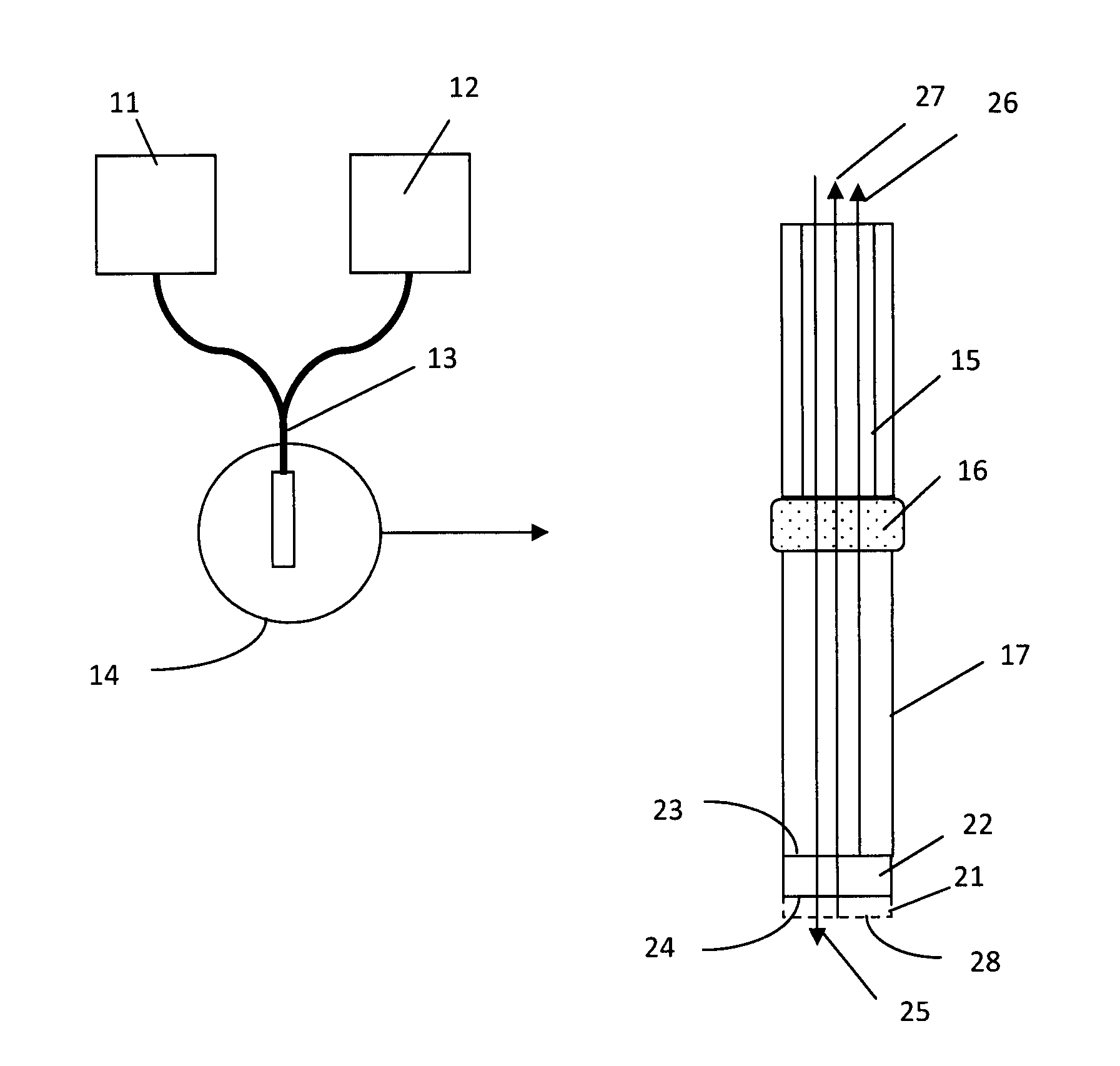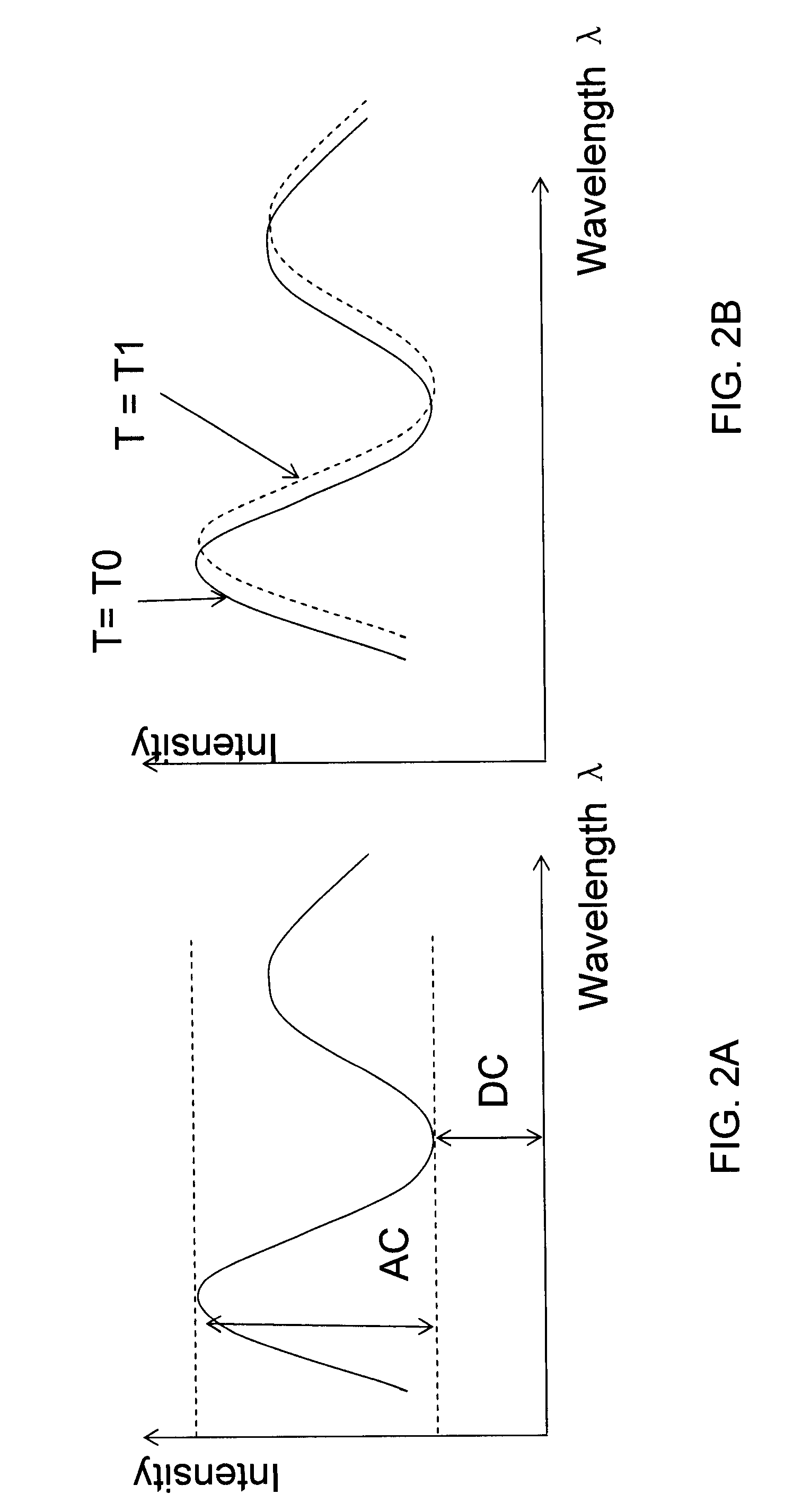Optical sensor of bio-molecules using thin-film interferometer
an optical sensor and biomolecule technology, applied in the direction of interferometric spectrometry, instruments, optical elements, etc., can solve the problems of reducing coupling efficiency, poor alignment, and difficulty in maintaining the same exact air gap size for different pairs of sensors and instruments
- Summary
- Abstract
- Description
- Claims
- Application Information
AI Technical Summary
Benefits of technology
Problems solved by technology
Method used
Image
Examples
example 1
Preparation of Streptavidin Probes
[0075]A glass rod (a monolithic substrate), 1 mm diameter and 2 cm in length, had both coupling end and sensing end polished. The sensing end was first coated with a SiO2 coating layer (a thin-film layer) with a thickness of 650 nm using a physical vapor deposition technology, and then deposited with aminopropylsilane (APS) using a chemical vapor deposition process (Yield Engineering Systems, 1224P) following manufacturer's protocol. APS is deposited to enable protein immobilization. APS adsorbs protein to the surface of the probe by a combination of hydrophobic and ionic interaction. Protein can also be coupled to the amino group of APS by covalent coupling using a crosslinking reagent. APS is only a monolayer, about 7 nm thick.
[0076]The probe (the glass rod coated with SiO2 and APS) was then inserted into the center bores of the molded plastic hubs, as shown in FIG. 3. The probe was then locked to the hub by either adhesive or a locking mechanism....
example 2
Detection of Protein A Binding to Human IgG
[0078]As shown in FIG. 3, each probe was first connected to waveguides in a ferrule. The waveguides connect to a halogen light source and a spectrometer so the light will be transported to the probe's sensing surface and reflected light will be transported to the spectrometer for measurement. Multiple of such systems can be set up to achieve parallel detection. The spectrometers measure the reflected light from the sensing ends of the probes and output spectral interference patterns in a real-time function of wavelengths and light intensity at each wavelength. A typical interference pattern is shown in FIG. 13. A phase change in the form of left shift of the peaks and valleys represents a reduction of the thin-film thickness (disassociation of molecules on the sensing surface); and a right shift means an increase of the thin-film thickness (association of molecules on the sensing surface). By converting the interference pattern to a digital...
PUM
| Property | Measurement | Unit |
|---|---|---|
| refractive index | aaaaa | aaaaa |
| diameter aspect ratio | aaaaa | aaaaa |
| refractive index | aaaaa | aaaaa |
Abstract
Description
Claims
Application Information
 Login to View More
Login to View More - R&D
- Intellectual Property
- Life Sciences
- Materials
- Tech Scout
- Unparalleled Data Quality
- Higher Quality Content
- 60% Fewer Hallucinations
Browse by: Latest US Patents, China's latest patents, Technical Efficacy Thesaurus, Application Domain, Technology Topic, Popular Technical Reports.
© 2025 PatSnap. All rights reserved.Legal|Privacy policy|Modern Slavery Act Transparency Statement|Sitemap|About US| Contact US: help@patsnap.com



